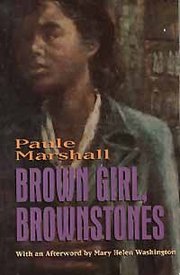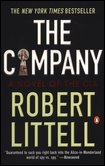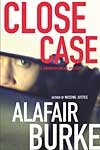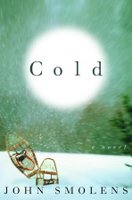Can fiction be divided into "boy books" and girl books?"
Among the courses I used to teach at a liberal arts college was a seminar on "Film, Fiction, and Politics." The basic point of the course was to get students to think about the general way we approach the causes of political events. For example, an orthodox political science course might look at the distribution of city services and expenditures and try to figure out who gets what and why. That's more or less the point of the classic
Who Governs?, by Robert A. Dahl, who asks: "In a political system where nearly every adult may vote but where knowledge, wealth, social position, access to officials, and other resources are unequally distributed, who actually governs?"
Or, an international politics course might try to figure out the causes of, say, the Iraq War: is the crucial variable in the origin of that conflict a man (George W. Bush, or perhaps Saddam), the state (something inherent in American democracy, or perhaps the actions of well-organized interest groups), or the distribution of power (say, the imagined rise in Iraqi power and the fear that it caused in America)?
In the seminar, instead of an actual city or a contemporary war, we took the well-defined world in a story and tried to figure out: given what happens to this or that character, is the cause down to one or more other persons, or do we have to look to wider causes? When we read parts of the
Iliad, we tried to figure out if the cause of the war was simply Paris running off with Menelaus's wife, and if the continuation and course of the war was because of the rage of Achilles or because of something like the dynamics of conflict, the competition for scarce resources, or the culture of the ancient world.
Likewise, an excellent story of Murakami's set near the end of the Manchurian campaign was fodder for speculation over whether the atrocities depicted in the story were because of the local commander, the nature of Japanese militarism, a function of battlefield necessity, or a few other causes that I can't recall.
Most of the stories were written by men and most of the students in the seminar were women. I can't explain the latter, though my then-colleague (and Friend of the Blog) Andrew spent quite a bit of time working through various hypotheses on the matter.
That most of the stories were by men came up in the seminar during a stretch where all the stories and the films involved some unhappy violence, and one female student asked why we weren't reading any happy stories. The answer was simple: we needed stories where the conflict was pretty obvious, and the fighting and bloodshed was all in the service of that clarity.
This discussion evolved into the question of whether there are "boy books" and "girl books." My take on the question goes something like this: yes, many if not most books are identifiably more appealing to men or to women, though the vast majority of good books will be read with pleasure by both genders. And there are many books that just don't fit into either camp: my exhibit A for that argument would be
Anna Karenina.
Moreover, while I like many novels that seem to fall squarely in the camp of "boy books," I think it would foolish to try to predict my reading habits based on that little nugget of information; see
here,
here,
here, and especially
here.
Anyway, I think the issue is one of those things that is interesting to chew on and it can support some long and interesting conversations, but if you try to be too rigorous about it you can really take the fun of it without really learning much.
Which brings me to
this recent item in the
Guardian. A couple of British academics interviewed a large (but perhaps unscientific) sample of men about the novels that had changed their lives. While I haven't read the study and am only going with the newpaper's account of it, it seems they drew some questionable inferences from the responses. The opening paragraph claims:
The novel that means most to men is about indifference, alienation and lack of emotional responses. That which means most to women is about deeply held feelings, a struggle to overcome circumstances and passion....
But look at the list of books the men chose and you might agree with my surmise that these are the books that most of the men probably read in secondary school; and because they had read relatively few books at that point in life and because adolescents are particularly impressionable, of course many men would name one of these books. But the book that "changed their lives" is not the same as the "novel that means most to" them: I would venture that most adult men have since found a number of books that mean more to them than those that influenced them as teenagers.
Of course, my conjecture is far less scientific than that of the scholars who did the report. But look at the list: Camus'
The Outsider is at the top. Could that really be the most common novel that changed men's lives? Perhaps. But #5 is Graham Greene's
Brighton Rock. What's up with that? It's not nearly his best novel, nor is it one of his enjoyable "entertainments." Why did that make the list? Is it taught in British schools?
Likewise,
The Catcher in the Rye is the sort of thing that changed the life of many adolescents--you read it in school and realize that you aren't the only one with a wonky outlook on the world--but is it really a book that "means the most to" an adult male? I mean an adult male who is not an assassin. (John Lennon's killer, Mark David Chapman, and Ronald Reagan's would-be assassin, John Hinckley, were both major
Catcher fans.)
Nick Hornby's
High Fidelity makes the list and actually is one of the few that feels like a genuine answer. (It's followed by
Ulysses, an answer I'd be better prepared to accept if the respondents were hooked up to a polygraph.)
High Fidelity is a "boy book" and the sort of novel that would mean a great deal to many adult males. And, yes, like
The Outsider, it's about "indifference, alienation and lack of emotional responses"--but not at all in the same way.
Like I said, it's a topic worth chewing on....
Did Camus'
The Outsider change your life?
Thanks to Friend of the Blog "Cochise" for pointing me toward the
Guardian article.
--Marshal Zeringue
and some brilliant insights into Othello and Billy Budd. The difference between jealousy and envy, he observes, is that the former applies to what we have, the latter to what we do not have. Iago’s envy is more poisonous than Othello’s jealousy; the destructive power of John Claggart’s attitude to Billy Budd is relentless, hidden in what is apparently normal and unexceptionable: since envy’s “lodgement is in the heart and not the brain, no degree of intellect supplies a guarantee against it”. At the end, when Budd kills Claggart because he cannot speak to defend himself against Claggart’s lie, the act has the proper inevitability of tragedy. These are wonderfully telling points.






















